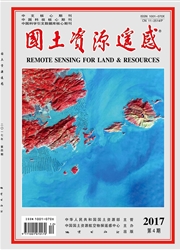

 中文摘要:
中文摘要:
以北京昌平地区为研究区域,获取了2007年该试验区C波段ENVISAT/ASAR数据和L波段ALOS/PALSAR数据,并提取了地物的后向散射系数。首先,利用MIMICS模型对该地区的春玉米、夏玉米和果木的后向散射特性进行模拟和分析;然后,将模拟结果同雷达实际观测数据进行对比;最后,利用不同作物之间的后向散射系数数值大小关系,建立分类二叉树,很好地区分了春玉米和夏玉米,总分类精度达86.66%。研究结果表明:双频多极化雷达数据能够提供有利于作物类型识别的多方面信息,对农作物遥感具有较大的优势和潜力。
 英文摘要:
英文摘要:
Based on C -band ENVISAT/ASAR and L -band ALOS/PALSAR data obtained from Changping test site of Beijing in 2007, the authors used the MIMICS model to simulate and analyze the backscattering characteristics of spring maize, summer maize and fruit trees, then compared the simulation result with the backscattering coefficients extracted from the SAR image and, according to the difference in backscattering coefficients of crops, set up a binary tree of classification algorithm to discriminate and identify the spring maize and summer maize, with the overall classification accuracy up to 86.66%. The result indicates that the dual - frequency and multi - polarization data can provide multi - dimensional information for identification and classification of crops, and have significant potential and advantages for crop remote sensing.
 同期刊论文项目
同期刊论文项目
 同项目期刊论文
同项目期刊论文
 期刊信息
期刊信息
